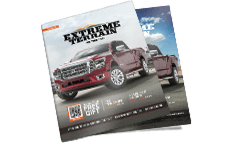
Talk to a Wrangler Sales Tech
1-877-870-8556
M-F 8:30A-11P, Sat-Sun 8:30A-9P

Shock and Awe: The Right Shocks For You and Your Jeep
The Right Shocks for You and Your Jeep
The function of a shock absorber is to control or dampen the movement of the spring. A lack of rebound control (shock extension) will cause a floating or bouncy ride, while too stiff of compression damping can create a lack of control on rough terrain and a harsh ride. Shocks resist motion by using a piston and valves that are mounted on the end of a shaft and moves through a fluid of thin oil or gas (pending on shock design). The fluid must pass through holes, valves, and slots in the piston as the shaft travels in and out. Resistance is created when the oil is forced through the openings on each cycle. XT has all the lift kit brands brands you are looking for like SkyJacker, Rancho, TeraFlex, Fox Racing, Warrior, Full Traction, Rough Country, Pro Comp, and many more. Gas-Charged or Pressurized: In a gas shock the pressurized gas is separated from the fluid and the gas is contained at a pressure which prevents the release of air from the shock oil solution, regardless of how much vacuum develops behind the piston as it moves through the oil. Gas shocks can either be of a high or low pressure design. High-pressure gas shocks are best suited for activities such as racing in which the shock undergoes continuous rapid compression and rebound. Low-pressure gas shocks are better on the trail. Cellular Gas or Cellular Foam: A cellular-gas shock or a shock featuring a foam cell is one that uses a cell or a bag filled with gas or a piece of foam material. The gas bag or foam cell normally hold 10 to 20 psi rather than the 100 to 200 psi of twin-tube gas pressurized or the 250 to 400 psi of mono-tube designs. Some sources claim a gas bag or a foam cell has little effect on cavitation. However, activities such as slow-speed trail driving don't normally cause cavitation, and many 4x4 builders recommend a low-pressure cellular gas or foam shock for trail rigs because of their lighter damping characteristics. There are several type of these shock absorber designs:- Twin Tube Designs-
- Gas Charged: By adding a low pressure charge of nitrogen gas in the reserve tube. The pressure of the nitrogen in the reserve tube varies from 100 to 150 psi, depending on the amount of fluid in the reserve tube. The gas serves several important functions to improve the ride control characteristics of a shock.
- PSD:(Position Sensitive Damping) Individually tuned, tailoring the length, depth, and taper of these grooves to ensure optimal ride comfort and added control. This in essence creates two zones within the pressure tube.
- ASD:(Acceleration Sensitive Damping ) Utilizing a new compression valve design. This compression valve is a mechanical closed loop system, which opens a bypass to fluid flow around the compression valve.
- Mono-Tube - High-pressure gas shocks with only one tube, the pressure tube. Inside the pressure tube there are two pistons: a dividing piston and a working piston. The working piston and rod are very similar to the twin tube shock design. The difference in actual application is that a mono-tube shock absorber can be mounted upside down or right side up and will work either way.
